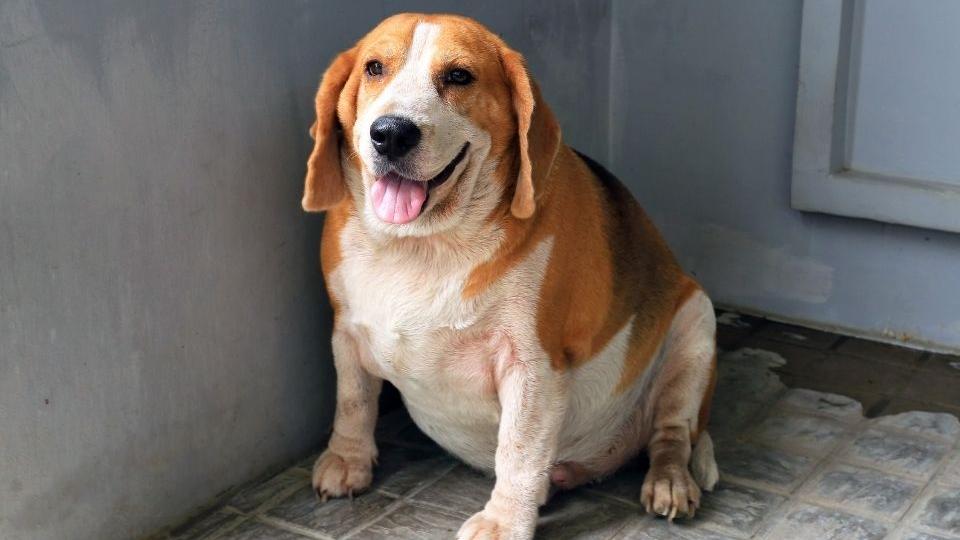Pet obesity has become a silent epidemic affecting millions of dogs across the United States. Recent studies reveal that 59% of dogs are overweight or obese, making weight management one of the most critical aspects of canine health care. Understanding how to identify excess weight in dogs and taking appropriate action can significantly improve their quality of life and longevity.
Understanding the Scope of Canine Obesity
The statistics surrounding pet obesity are alarming and continue to trend upward. The percentage of overweight dogs increased from 56% in 2018 to 59% in 2022, indicating this health concern is becoming more prevalent rather than improving. This increase reflects changing lifestyle patterns, feeding habits, and exercise routines that directly impact our canine companions’ health.
The consequences of carrying excess weight extend far beyond appearance. Overweight dogs face increased risks of diabetes, heart disease, respiratory problems, and joint issues that can significantly reduce their lifespan and daily comfort. Early identification and intervention become crucial for preventing these serious health complications.
Visual and Physical Signs Your Dog May Be Overweight
The Rib Test
One of the most reliable methods for assessing your dog’s weight involves checking their ribs. When running your hands along your dog’s sides, you should be able to feel the ribs easily without pressing hard. If significant pressure is required to locate the ribs, or if they cannot be felt at all, this indicates excess weight accumulation.
Waist Definition
Looking at your dog from above, there should be a visible waist tuck behind the ribcage. From the side view, the abdomen should tuck up toward the hind legs rather than hanging down or appearing rounded. A straight line or sagging belly from chest to hind legs suggests weight gain.
Face and Neck Changes
Excess weight often accumulates around the face and neck area, creating a fuller appearance. The neck may lose definition, and facial features might appear rounder or less defined than usual. Some dogs develop fat deposits around the base of the tail as well.
Behavioral Indicators
Weight gain frequently manifests through changes in activity levels and behavior. Dogs may show decreased enthusiasm for walks, tire more easily during play, have difficulty climbing stairs or jumping onto furniture, and display reluctance to engage in previously enjoyed activities.
The Body Condition Score System
Veterinarians use a standardized Body Condition Score (BCS) system, typically ranging from 1-9, with 4-5 representing ideal weight. However, only 45% of dog owners report familiarity with BCS, and fewer than 30% recall receiving a BCS score from their veterinarian. This scoring system provides objective criteria for weight assessment:
- Score 1-3: Underweight (ribs, spine, and hip bones easily visible)
- Score 4-5: Ideal weight (ribs easily felt, visible waist tuck)
- Score 6-7: Overweight (ribs difficult to feel, minimal waist tuck)
- Score 8-9: Obese (ribs cannot be felt, no waist tuck, fat deposits visible)
Creating an Effective Weight Management Plan
Dietary Modifications
Successful weight management begins with portion control and food quality assessment. Many pet owners unknowingly overfeed their dogs by relying on feeding guidelines that may not account for individual metabolism, age, or activity level. Measuring food portions accurately and consulting with a veterinarian about appropriate daily caloric intake form the foundation of weight management.
Consider switching to a weight management formula dog food that provides balanced nutrition while reducing calories. These formulations typically contain higher fiber content to promote satiety while maintaining essential nutrients.
Exercise Strategy
Gradual exercise helps overweight dogs build stamina while avoiding injury. Start with short, frequent walks and gradually increase duration and intensity as fitness improves. Swimming provides excellent low-impact exercise for dogs with joint concerns, while interactive play sessions can make exercise enjoyable.
Addressing Joint Health During Weight Loss
Weight loss efforts can be particularly challenging for dogs already experiencing joint discomfort, as excess weight puts additional strain on joints while making exercise more difficult. Supporting joint health during the weight management process becomes essential for success.
Modern advances in joint support have introduced innovative ingredients like UC-II® collagen, which works differently from traditional supplements. Unlike conventional glucosamine and chondroitin combinations, UC-II® collagen interacts with the immune system to support normal inflammatory pathways and maintain cartilage health. This advanced approach to joint support can help overweight dogs maintain mobility and comfort during their weight loss journey, making regular exercise more achievable.
Professional Guidance and Monitoring
Veterinary Consultation
Before beginning any weight loss program, schedule a comprehensive veterinary examination to rule out underlying medical conditions that might contribute to weight gain, such as hypothyroidism or Cushing’s disease. Your veterinarian can provide specific caloric recommendations and establish realistic weight loss goals based on your dog’s current condition and target weight.
Regular Progress Tracking
Successful weight management requires consistent monitoring. Weekly weigh-ins help track progress and allow for dietary adjustments when necessary. Keep a food diary documenting all meals, treats, and snacks to identify potential areas for improvement.
Treat Management
Treats often represent hidden calories that can sabotage weight loss efforts. Calculate treat calories into the daily caloric allowance, choosing low-calorie dog treat options like carrots, green beans, or specially formulated diet treats. Consider using praise, attention, or playtime as non-food rewards. You can consider the best organic dog treat options as well.
Long-term Maintenance Strategies
Sustainable Lifestyle Changes
Successful weight management extends beyond reaching the target weight to maintain results long-term. Establishing consistent feeding schedules, regular exercise routines, and ongoing portion control creates sustainable habits that prevent weight regain.
Environmental Modifications
Remove food-seeking opportunities by securing garbage cans, avoiding leaving food accessible, and ensuring all family members follow the same feeding guidelines. Create an environment that encourages activity through interactive toys and designated play areas.
Age-Related Adjustments
As dogs age, their metabolic needs and activity levels change. Regular veterinary check-ups help identify when dietary adjustments become necessary to prevent gradual weight gain during senior years.
The Path Forward
Addressing canine obesity requires commitment, patience, and consistency from pet owners. The journey toward optimal weight may take several months, but the benefits include increased energy, improved mobility, reduced disease risk, and enhanced quality of life for your canine companion.
Success depends on viewing weight management as a lifestyle change rather than a temporary diet. With proper guidance, appropriate nutrition, regular exercise, and supportive care for joint health during the process, overweight dogs can achieve and maintain healthy weights throughout their lives.
Remember that every dog’s weight loss journey is unique, and what works for one may not work for another. Stay committed to the process, celebrate small victories, and maintain open communication with your veterinary team to ensure the best possible outcomes for your dog’s health and happiness.

